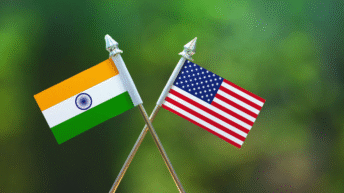
In the mid-18th century, Ahmad Shah, leader of the Abdali contingent in the Persian Army of Nadir Shah carved out a buffer zone between Persia and a crumbling Mughal Empire in the Indian subcontinent which later evolved into a buffer state, between Czarist Russia and British India, which helped the British to thwart Russian expansionism into India. As a result of the May 1879 Treaty of Gandamak after the Second Afghan War, Afghan foreign affairs passed into British hands. This treaty also gave Britain control over Pashtun lands west of the Indus. After the ‘Panjdeh incident’ of 1885, a joint Anglo-Russian border commission, without Afghan consent, fixed the Afghan border with Turkestan, which was the whole of Russian Central Asia.
However, Afghanistan gained its independence from Britain after the signing of the Anglo-Afghan Treaty of 1919. One of the reasons why Britain quit Afghanistan was the country’s dismal revenue collections, clearly reflected in William McNaughten’s missive to George Eden, the Governor-General of India, in 1841 that read: “What do you do with a kingdom whose revenues are only Rs 15 lakhs a year?” Even today, Afghanistan’s own revenues are less than 10% of its GDP, which is approximately $19 billion.
Moscow was alarmed when the anti-Soviet faction (Khalq) of Afghan Communists won the internal party elections against the pro-Soviet faction (Parcham). In December 1979, Brezhnev ordered Soviet tanks to roll into Afghanistan to dislodge the pro-US Hafizullah Amin from power and install the Soviet loyalist Babrak Kamal in his stead. By November 1986, Gorbachev had expressed his desire to recall Soviet troops upon realizing the high diplomatic and socio-economic costs of the Afghan war.
The US entered Afghanistan on the pretext of its ‘war on terror.’ When the ‘troop surge’ in 2010 failed to bring peace to Afghanistan, Obama announced the draw-down of US combatants. The Doha talks signalled Trump’s and then Biden’s firm intention to wind up the American military presence in Afghanistan. US policymakers calculated that “Af-exit” was in America’s best interests as it would help Washington to disentangle from the Afghan fiasco to deal with the emerging Chinese threat. The US’ calculation is that Afghanistan will become a migraine for China and Russia. America could then lay the ground for the next Great Game.
On the American radar, the threat from trans-national jihad to the US mainland has receded considerably, while the challenge posed by neo-imperialist powers has grown manifold. Washington had to re-prioritize its foreign policy goals and re-shape its economy. US lawmakers have realized that, in the last 3 decades or so of America’s “forever wars,” China has stolen many marches over the US in terms of economic growth. China’s mammoth economic power is its most potent source of influence across the world. The idea is that making America more economically competitive, by improving its infrastructure and investing in new technologies, is the best way the US can counter China. The US Senate’s approval of the $1 trillion infrastructure investment bill is a step in that direction. Biden and the G7 had also announced the “Build Back Better for the World” or BBBW initiative to rival China’s BRI. The US has expended much diplomatic capital to shape the Quad into a formidable naval coalition force to deter Chinese maritime depredations and keep the Indo-Pacific region open and free under its supremacy. Then, there is a threat from Russia. Washington has taken note of the so-called “Patrushev Doctrine,” which calls for raising the spectre of conflict by increasing nuclear tensions.
Russia’s prime concerns with a Taliban-ruled Afghanistan are over drug trafficking and infiltration of Islamic extremists into Central Asia, which Moscow considers as its southern defensive buffer. Russia has moved an entire armored division to its Dushanbe military facility to raise the guard against any possible intrusion by radical extremists. Russia has wrapped up military drills with Uzbek and Tajik forces near the Afghan border, in a show of heightened military preparedness.
Beijing is not hiding its cold feet though it is providing emergency aid of $31 million to Kabul. If Afghanistan gains relative stability under the Taliban, China will acquire greater strategic depth than even Pakistan. This will help her to further encircle India. China will then consolidate its primacy in Central Asia, to the detriment of Russia, and it will also acquire a protective shield over its restive Uyghur province of Xinjiang. Beijing would also be well placed to exploit the untapped mineral riches of Afghanistan. Keen on extending the CPEC to Afghanistan, China is mulling on linking the Kashgar-Gilgit railway line to Kabul. The Chinese are also working on rail connectivity with Afghanistan through the Wakhan Corridor.
For historical reasons, India has been hesitant to enter the Taliban-ruled Afghan minefield. But India cannot afford to wait so long so as to alienate the Taliban to the point that they start harbouring anti-India outfits. Engaging and expanding leverage is more reasonable than letting Afghanistan become a peg in the Chinese game.
Pakistan has always wanted Afghanistan as a hedge against India. One, its armed forces can retreat into Afghanistan if India attacks. Two, it can target Indian assets in the region. And three, it can rally the Mujahideen from various outfits to inject new life into the moribund jihad in Kashmir. But Pakistanis overlook the fact that half of the Pashtun nation lives in Pakistan and that they don’t recognize the Durand Line. The Pashtun-dominated KPK province is a soft underbelly of the Pakistani state. If there is an upsurge of Pashtun nationalism in Pakistan, then even the Taliban would be compelled to lay claim over the Pashtun lands south of the Durand Line. India can then come to their assistance for obliterating the Durand Line and integrating the KPK province within Afghanistan. It is in India’s interest to develop some kind of a transactional or working relationship with the Taliban regime, and retain her soft power in Afghanistan to counter Pakistan.






Add comment